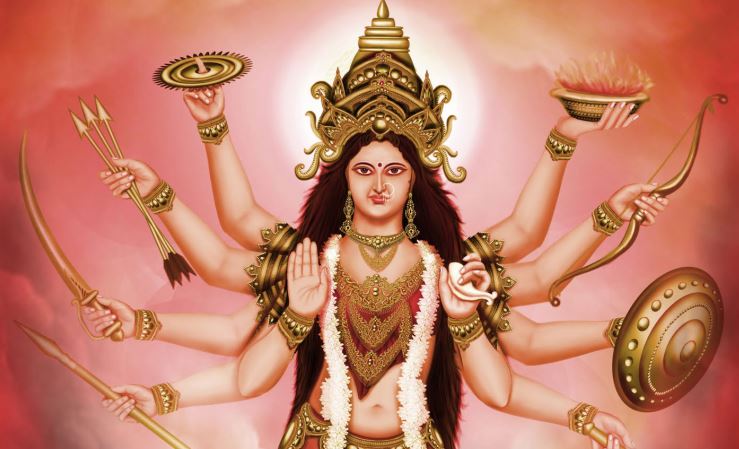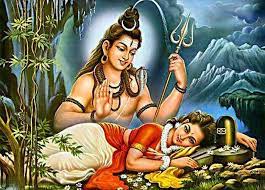SHAKTISM

I am the Queen,
the gatherer-up of treasures,
most thoughtful,
first of those who merit worship.
Thus Gods have established me
in many places with many homes
to enter and abide in.Through me alone
all eat the food that feeds them,
– each man who sees, breathes, hears
the word outspoken.
They know it not,
yet I reside in the essence of the Universe.
Hear, one and all,
the truth as I declare it.I, verily, myself announce
and utter the word
that Gods and men alike
shall welcome.
I make the man I love
exceeding mighty,
make him nourished, a sage,
and one who knows Brahman.I bend the bow
for Rudra [Shiva],
that his arrow may strike,
and slay the hater of devotion.
I rouse and order
battle for the people,
I created Earth and Heaven
and reside as their Inner Controller.On the world's summit
I bring forth sky as the Father:
my home is in the waters,
in the ocean as Mother.
Thence I pervade all existing creatures,
as their Inner Supreme Self,
and manifest them with my body.I created all worlds
at my will,
without any higher being,
and permeate and dwell
within them.
The eternal and infinite consciousness is I,
it is my greatness
dwelling in everything."
What is Shaktism?
-
1
Shaktism is a branch of Hinduism that includes a diverse collection of traditions that worship the feminine as the supreme deity or Ultimate Reality. The goddess worshipped is often called Shakti or simply Devi, which means "goddess"
-
2
Shaktism is, together with Vaishnavism and Shaivism, one of the major forms of modern Hinduism and is especially popular in Bengal and Assam. Shakti is conceived of either as the paramount goddess or as the consort of a male deity, generally Shiva.
-
3
Many Hindus worship Shakti as the divine mother who calls for absolute surrender. Yogis regard Shakti as the power, lying dormant within the body as a coiled serpent (kundalini), that must be aroused and realized to reach spiritual liberation.
-
4
Archaeological finding suggest that Shaktism goes back to prehistoric times. The Goddess does feature in the Vedas themselves, but scholars suggest that mainstream worship comes from other sources. She appears in the Epics and Puranas, especially the Markandeya Purana. It is in the Tantras that she appears to take the role of the Supreme.
-
5
There appear to be no strong sampradayic links, and Shaktism may have been passed down in a broader fashion, largely through local and village customs, and through connections with other schools such as Shaivism.
-
6
Shaktism has greatly influenced modern thinkers such as Ramakrishna and Aurobindo. Not surprisingly Devi in her fiercer forms has become the patron deity of women’s liberation movements.
-
7
Wherever Hindus have settled throughout the world, there are now a number of prominent Devi temples.
Forms of the Goddess in Shaktism
Hindus in general, and Shaktas in particular, approach the Devi in a multiplicity of forms. There are thousands of goddess forms, many of them associated with particular temples, geographic entities or even individual villages. The form chosen by a particular Hindu depends on many factors, including family tradition, regional practice, guru lineage, and personal resonance, among others.
Among these innumerable manifestations of Shakti, there are a few highly popular goddess forms that are more widely known and worshiped throughout the Hindu world and therefore stand out among others. These principal benevolent goddesses are:








